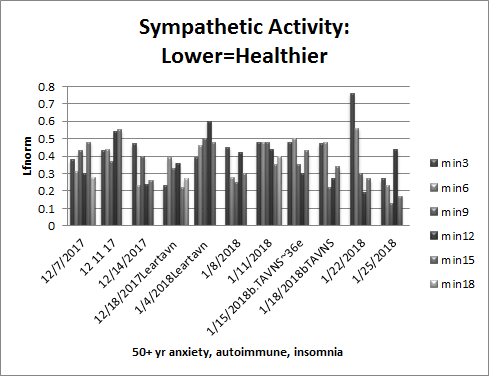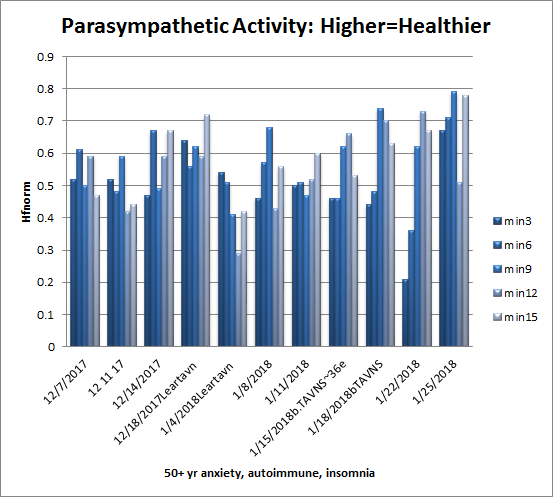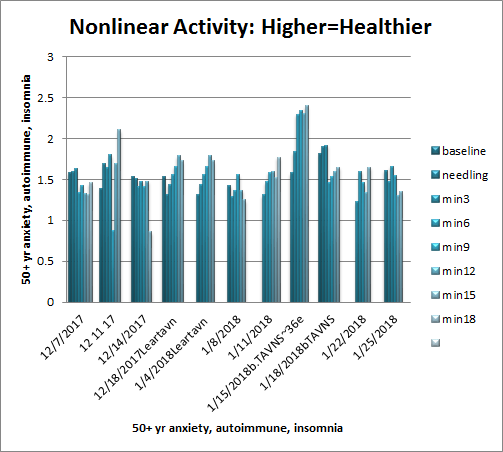Anxiety, HRV, Acupuncture and TAVNS: Stories from the Clinic
Kristen Sparrow • January 26, 2018


This case study illustrates some of the patterns I’ve discovered when looking at HRV with Acupuncture and TaVNS. I realize that some of this is nuanced and, perhaps, not that interesting to the general reader, but I do think it’s important to the overall project.
This is a middle age patient with an autoimmune disorder, anxiety and insomnia. The insomnia affects every aspect of her health, so we’re trying to prioritize it. As with other autoimmune disorders, decreasing stress can help stabilize immune reactions. Optimizing the stress response is crucial. Also, as with migraine, we are trying to blunt the reaction to “triggers” and to cause a decrease in overall stress over time.

I won’t include all of the data that I measure, but in sum there are three types of heart rate variability calculations I look at. The first is time domain methods. This looks at basic heart rate variability in a very general way, and you can see the relative health/age/stress of the patient. A patient with a chronic condition, very stressed, or elderly will have low RMSSD and Pnn50. If the patient is young, particularly fit, or low stress and healthy, these measures will be higher.
What I’ve found, is in patients with low RMSSD and low Pnn50, the Frequency Measures that correlate with Parasympathetic Activity and Sympathetic Activity are most indicative. In patients with high RMSSD and Pnn50, Nonlinear measures are more indicative.
In this patient, we see some decrease in LFnorm (sympathetic activity) over time, and some increase in parasympathetic activity over time. The nonlinear data does not change much, as we would have predicted.
If you look under each date, you can see where I used TAVNS. There is no clear pattern whether this helped with her stress levels or not.




